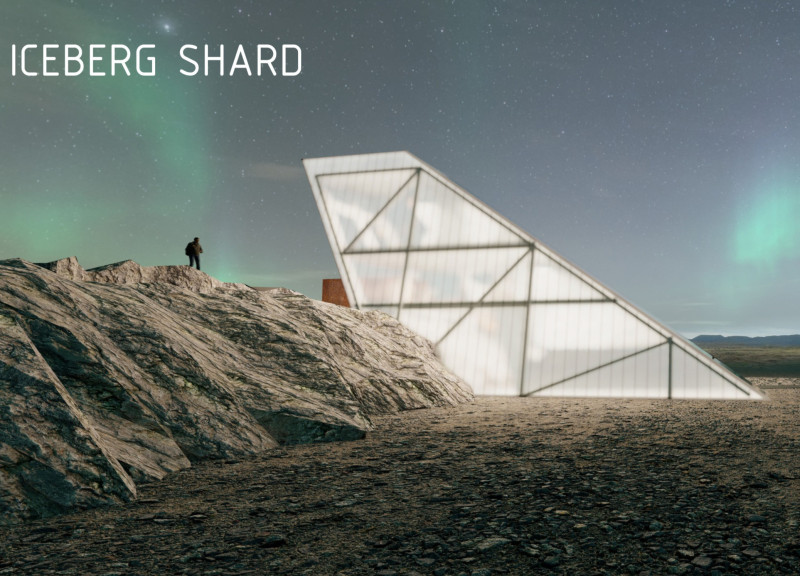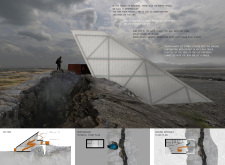5 key facts about this project
The Iceberg Shard is located above the entrance to Kvennagjá Cave, where it blends into the unique geological landscape of Iceland. Serving as a gateway to bathing areas, the design draws inspiration from the ancient creation story of Ginnungagap, highlighting the contrast between the forces of fire and ice. This concept emphasizes harmony with the surroundings and encourages visitors to engage with both the architecture and nature.
Conceptual Framework
The design reflects the balance of elemental themes found in Icelandic mythology. Visitors are guided from ground-level spaces, which emphasize the natural rock, to elevated observation points. This arrangement not only nurtures a connection with the volcanic terrain but also enhances the significance of the cultural story behind the location.
Material Selection
Materials play a crucial role in the project’s execution. The structure primarily uses precast elements for efficiency, allowing for quick assembly and resilience over time. Steel profiles form the foundational support, ensuring stability for the building. The facade features smooth polycarbonate panels, which promote thermal insulation while maintaining visibility between inside and outside spaces.
Visitor Experience
The ground floor offers essential facilities, including a reception area, restrooms, and lockers, ensuring convenience for guests. As visitors ascend to the upper levels, they encounter a café and spacious observation areas. This thoughtful arrangement invites users to appreciate the scenic views of Lake Mývatn and encourages exploration of the natural setting.
Sustainability Features
A notable aspect of the Iceberg Shard is its incorporation of geothermal energy systems, providing a source of power from low-to-moderate temperature geothermal resources. This approach lowers dependence on outside energy sources and aligns with the environmental characteristics of the region, embracing the geothermal nature of the site.
The design's combination of smooth polycarbonate and rugged volcanic rock creates a visual contrast that reinforces the project’s connection to elemental themes. This interaction encourages reflection on the relationship between the built environment and the surrounding landscape.






















































